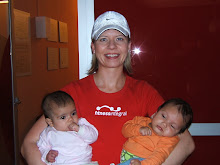One of the most common problems I see as a corrective exercise specialist is lazy glutes. Is your bum a lazy bum?
Inactive or poorly active glutes can cause havoc for the body. Just imagine these huge muscles not doing their job! Someone else has to take up the slack. This can cause the hamstring and lower back to over work and thus complain in the form of pain, strains, etc. Also, knee pain can often be traced back to lazy glutes. Obviously poorly functioning glutes leave you far from optimal performance. This is like driving a car with only half of the cylinders working!
So, let’s see if your glutes are asleep and going for a free ride.
Hold a basic back bridge for 60 seconds. At the end of the 60 seconds note where you feel the effort. Which muscles are working the most: the hamstrings, the glutes, or the low back?
Your glutes are lazy if you feel this exercise more in the low back or the hamstrings.
Other signs for potentially lazy glutes include:
- Anterior pelvic tilt
- Tight hip flexors
- “No butt”
- Knee problems
- Knees that cave in while running, squatting, etc.
So I have Lazy Glutes. Now what?!
A few basic exercises to activate the glutes include:
Keys to successful reactivation include:
- Focus and concentration. You must think of the muscle you want to fire. We are working on the nervous system connection to the muscles.
- Palpation. Touch your glutes. This will increase neuromuscular facilitation and assist in activation.
- Patience. Most likely your butt didn’t start bumming yesterday. It can take some time to retrain the brain-muscle connection.
- Perfect technique. Poor technique only teaches poor mechanics to your system. Be sure to use perfect technique. Otherwise you might as well do nothing.
Pick 2 to 3 activation exercises above and do them every day for 2 sets of 10-15. It is recommended that you start with the easier exercises first to assure perfect technique. Always do your activation exercises BEFORE your workout to aid in better movements during the training.
This glute bridge test is part of a full corrective assessment. A corrective exercise specialist can perform a complete movement assessment and provide compensation specific exercises to help you realign your body. The idea is to calm down the over active muscles, lengthen the shortened muscles, activate the inactive muscles, and improve integrated muscle coordination. This article only touches on activating the glutes. A comprehensive corrective exercise program would also include self myofascial release, specific stretches, additional activation exercises, and integration exercises.




